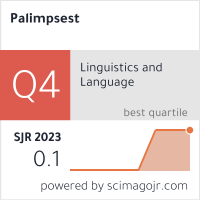THE SOCIAL SIGNIFICANCE OF ANGLICISMS IN GERMAN YOUTH LANGUAGE: A COMPARATIVE ANALYSIS BETWEEN 'DER STANDARDAND' AND 'COOL MAGAZIN'
DOI:
https://doi.org/10.46763/PALIM23816057cAbstract
This paper explores the influence of English loanwords on the German language, especially in the context of youth communication, and the profound impact of anglicisms on linguistic and cultural dynamics. By examining the appropriation, usage patterns, and attitudes of German-speaking youth toward these borrowings, this thesis aims to shed light on how anglicisms shape social interactions and contribute to the identity construction of young Germans. Using a multidimensional approach, this paper analyses the linguistic characteristics of anglicisms, examines their prevalence and the contexts of their use by German adolescents, and explores the motivations for their inclusion in everyday language. By combining theoretical approaches from sociolinguistics, language contact, and youth language research, this study contributes to the ongoing academic discourse on the social meaning of anglicisms in German youth language. To support the findings and conclusions of this paper, an empirical analysis was conducted comparing two magazines with different target audiences. In this comparative study, the frequency and use of anglicisms in both papers were investigated and analysed. The goal was to find out which newspaper used greater amount of anglicisms in order to determine the different degree of anglicization of the language depending on the target audience. Through this comparative approach, valuable insights into the prevalence and influence of anglicisms in different contexts were gained, providing a solid basis for conclusions regarding their use and meaning.
Keywords: anglicism; youth language; sociolinguistic; sociolect.


